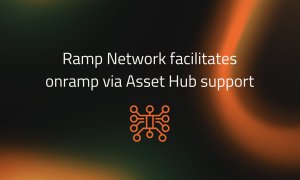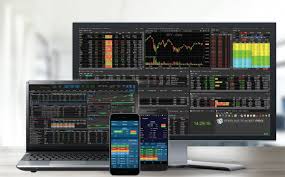NY Court dashes CFTC market manipulation claims against DRW Investments, Donald Wilson
“It is not illegal to be smarter than your counterparties in a swap transaction”, Judge Richard J Sullivan stated as he ruled against the CFTC.

Judge Richard J Sullivan of the New York Southern District Court has found in favor of DRW Investments and Donald Wilson in a market manipulation case brought by the Commodity Futures Trading Commission (CFTC) back in 2013.
In a Memorandum & Order, signed by the Judge on Friday, and made available earlier today, the Court finds that the CFTC has failed to meet its burden of proof with respect to its market manipulation, attempted market manipulation, and control person liability claims, and enters a judgment in favor of the defendants.
Let’s recall that the regulator had brought this action against Donald R. Wilson and his company DRW Investments, LLC, alleging that the defendants manipulated or attempted to manipulate the price of a commodity in violation of Sections 6(c) and 9(a)(2) of the Commodity Exchange Act (the “CEA”), 7 U .S.C. §§ 9, 13(a)(2) (2006). The CFTC had claimed violations of the CEA as it existed during the period relevant to this action, which extended to August 12, 2011.
In particular, the CFTC alleged that Defendants “unlawfully placed orders for certain futures contracts with the intent to move the prices of the contracts in their favor” and “to increase the value of the futures contract positions they held in their portfolio.” In essence, the CFTC had argued that the defendants attempted to manipulate, and in fact did manipulate, the market for various interest rate swaps. According to the CFTC, this price manipulation scheme took place over an approximately seven-month period between January 24, 2011 and August 12, 2011, involved over 1,000 electronic bids, and netted Defendants approximately $20 million in ill-gotten gains.
In explaining his decision, the Judge noted that throughout the depositions and trial in this case, the defendants credibly described their trading strategy.
- “At all times, … we bid below what we believed to be the Three-Month Contract’s fair value, so any trade would have positive expected value.”
- “Our trading strategy continued to be to acquire fixed-rate long positions in the Three-Month Contract … below our assessment of its fair value”.
- “The basic principle for our bidding was always the same: we wanted to acquire long positions . . . at rates below our estimate of fair value.”
The CFTC offered no evidence to refute this testimony, the Judge stressed.
The Court notes that there are several gaps – concessions, almost – in the CFTC’s case. First, there is no evidence that DRW ever made a bid that it thought might be unprofitable. Also, there is no credible evidence that DRW ever made a bid that it thought could not be accepted by a counterparty. Furthermore, the CFTC provided no credible evidence as to what the fair value of the contract actually was at the time DRW was making its bids. On top of that, there is no credible evidence that DRW’s bidding practices ever scared off would-be market participants. And finally, there is no evidence that DRW ever made a bid that violated any rule of the exchange – a fact the CFTC conceded in its closing argument.
The Judge conceded that there can be no question that the defendants had the ability to influence the settlement price of the Three-Month Contract by making bids on the electronic exchange. But whereas the CFTC may have established the first element of its market manipulation claim, its case founders on its abject failure to produce evidence – or even a coherent theory – supporting the existence of an artificial price.
“The inescapable conclusion from the evidence introduced at trial is that DRW’s bids, and the consequent settlement prices, were the result of free competition,since sophisticated market participants would surely have accepted Defendants’ open bids if they thought they were above market value”, the Judge says.
However, the CFTC also alleged that the defendants engaged in attempted market manipulation in violation of Sections 6(c) and 9(a)(2) of the CEA. Unlike market manipulation, attempted market manipulation does not require proof of an artificial price – only that Defendants “acted (or failed to act) with the purpose or conscious object of causing or effecting a price or price trend in the market that did not reflect the legitimate forces of supply and demand.”
In this respect, the CFTC has failed to prove that the defendants intended to cause artificial prices. In fact, the trial testimony and exhibits prove beyond the shadow of a doubt that the defendants sincerely believed the fair market value o f the Three-Month Contract was higher than the bids they submitted over the course of the alleged conspiracy.
The Court has no hesitation in concluding that the defendants sincerely believed their bids to be more reflective of the legitimate forces of supply and demand than were the Corresponding Rates. Put differently, Defendants believed their bids to be below their estimated fair market value of the Three-Month Contract, and therefore not artificial.
The Court finds that the defendants made bids with an honest desire to transact at those posted prices, and that they fully believed the resulting settlement prices to be reflective of the forces of supply and demand. Given that the defendants’ trading pattern is supported by a legitimate economic rationale, it “cannot be the basis for liability under the CEA.”
Accordingly, the Court found for the defendants, and against the CFTC, on the CFTC’s attempted market manipulation claim.
In conclusion, the Judge stated:
“It is not illegal to be smarter than your counterparties in a swap transaction, nor is it improper to understand a financial product better than the people who invented that product”.
Don Wilson did not need to manipulate the market to capitalize on that superior knowledge, and there is absolutely no evidence to suggest that he ever did so, Judge Sullivan said.









